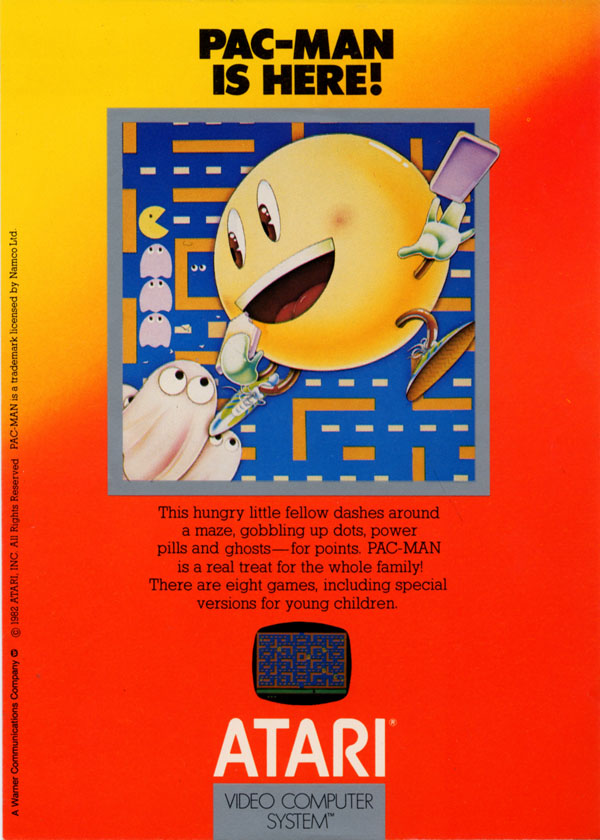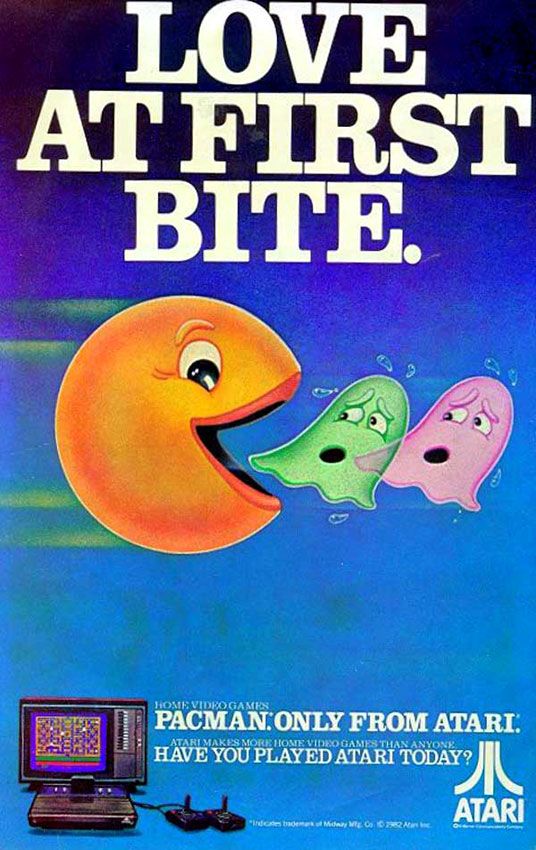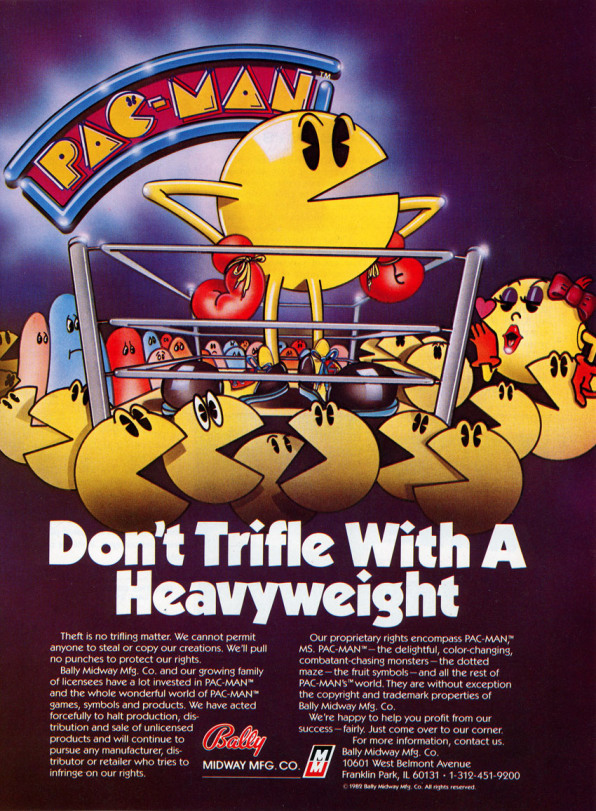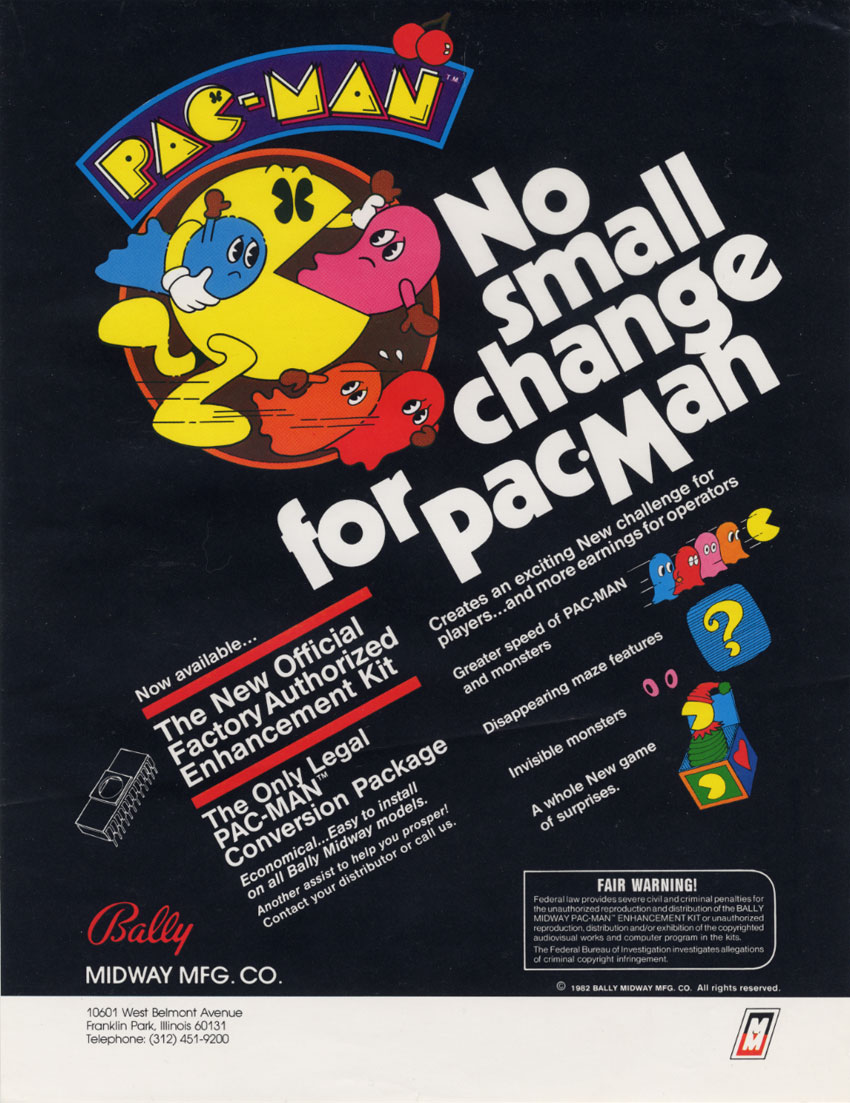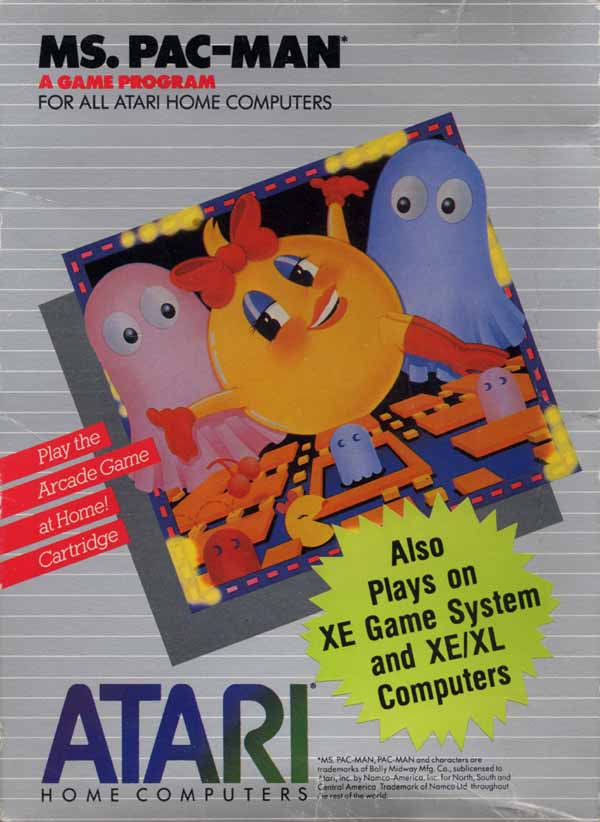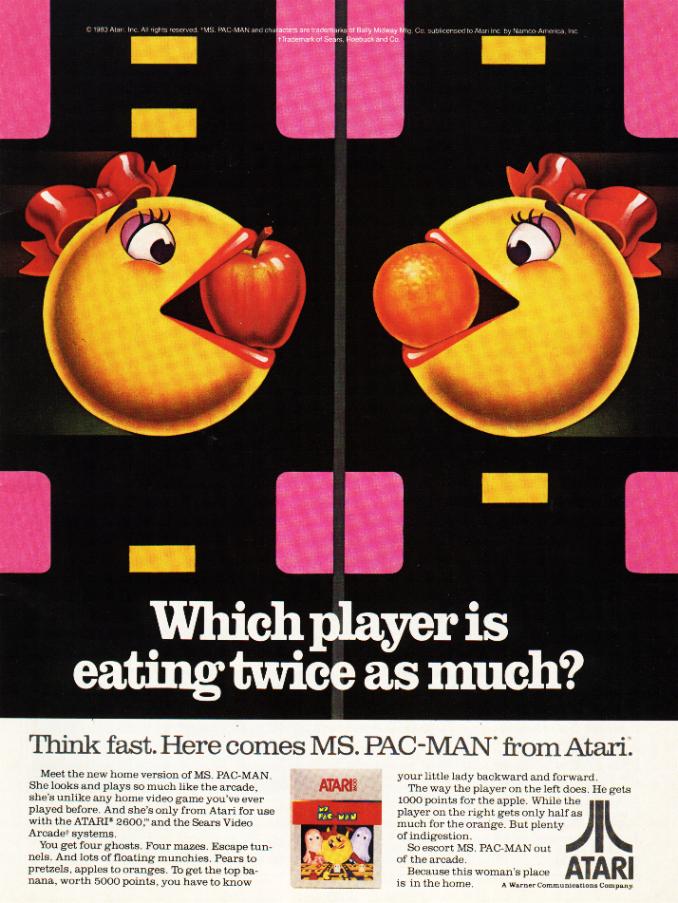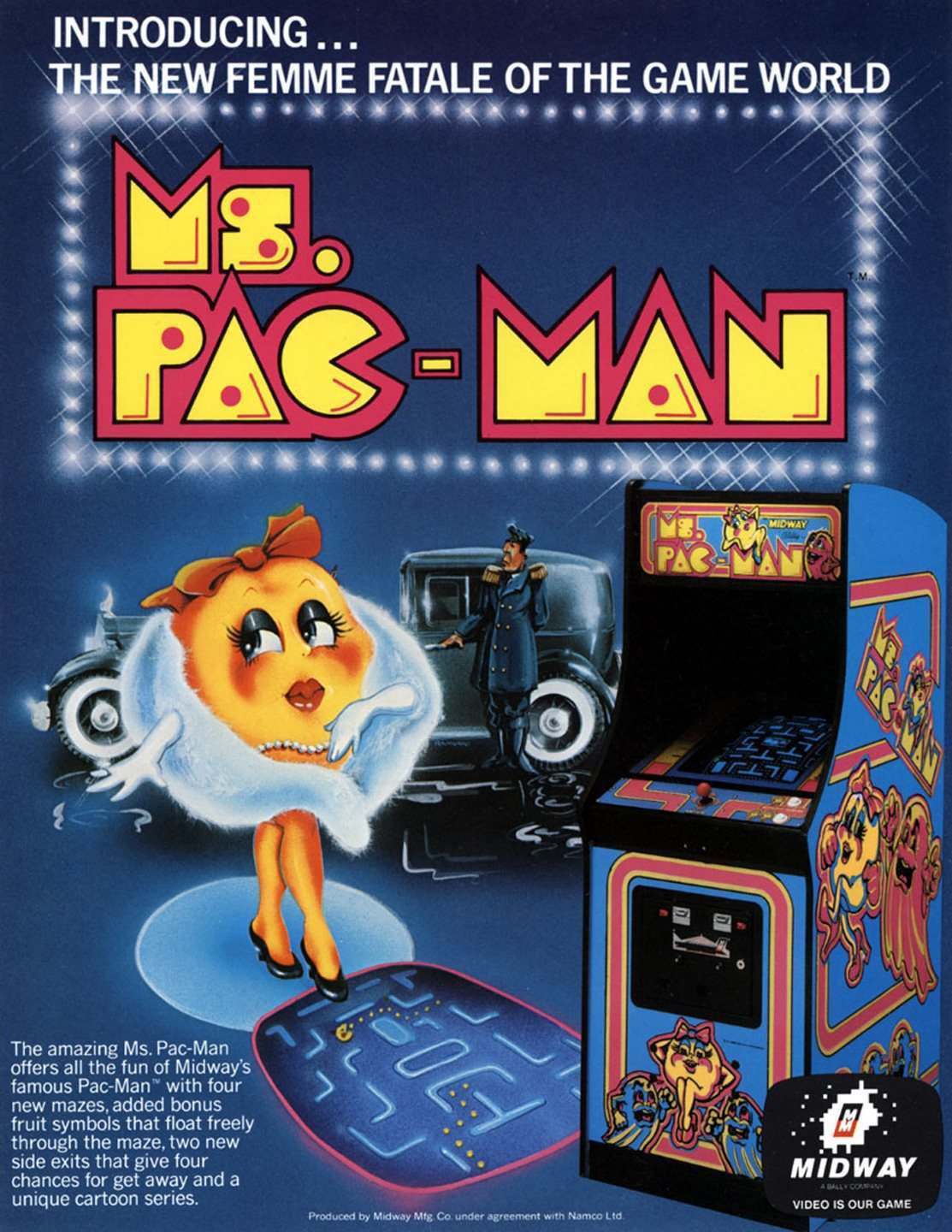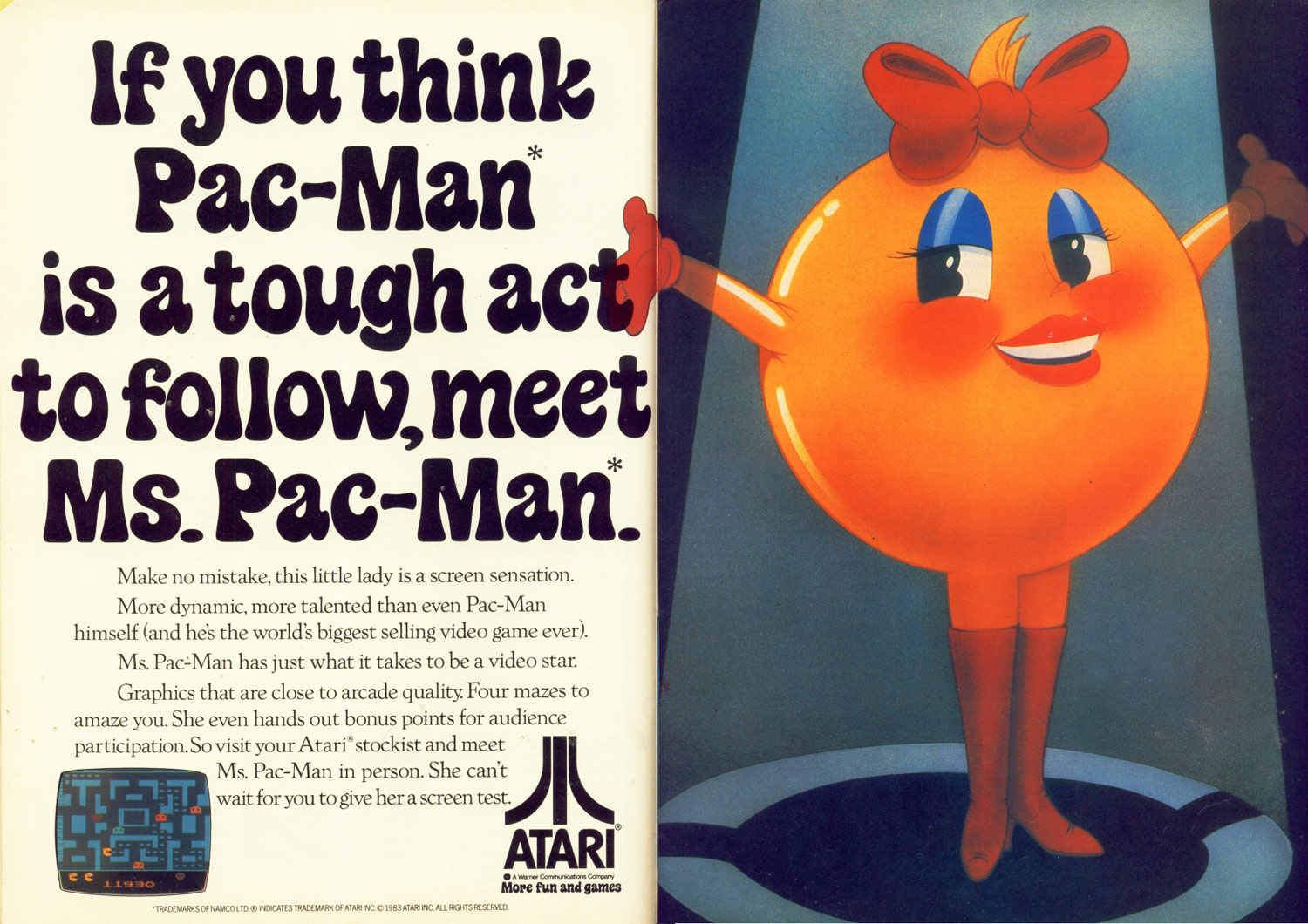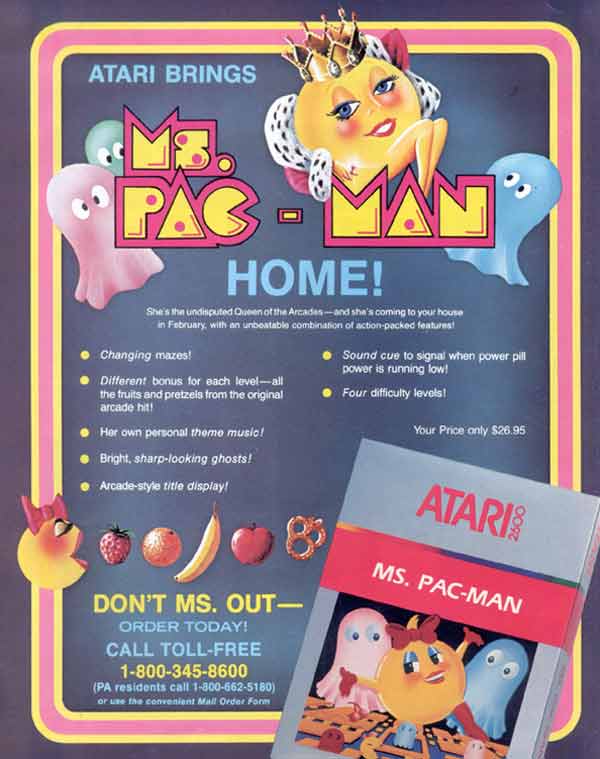Readers of this blog are already aware of my distinct fondness for video game box art, particularly from the early 1980s. The disparity between the elaborate imagery on game boxes and in marketing materials and what players saw on the screen with the actual gameplay isn’t too surprising given the limited technology of the time, but what makes the trend stand out for me is both the consistency of really beautiful artwork and the level of ‘buy-in’ the consumers had in accepting this disparity. It was a disparity but not a disconnect – we all wanted to believe that these crude blocks on the screen were elaborate space fighters and super-charged F-1 racers and fearsome warriors, and in that sense the player and developer and graphic artist were all united in this shared fantasy.
A great example of this can be found with Pac-Man and Ms. Pac-Man. No games were higher on the hill in the early ’80s, and they’re not really games that offer an easy explanation of what they would look like in ‘real life’. There’s a lot of ambiguity there that continues to fuel speculation today, and that ambiguity is evident in the way that the franchise was marketed to consumers and the industry itself in print and on television. It is simultaneously confounding and exciting to see so many different models for Pac-Man, Ms. Pac-Man and the ghosts in these materials.
One thing that’s more or less consistent in these interpretations is the spherical Pac-Man, that he’s not just some disc with a mouth either sliding forward or rolling yet somehow keeping his mouth in the same place. Most interpretations also give him legs. It’s just easier to visualize this way. Atari’s materials really lean into the “power block” dashes that Pac-Man collects as opposed to the circular pellets in the arcade version (and everywhere else). This U.K. spot does a great job and goes the extra mile with custom animation.
This U.S. ad struggles, using camera moves on a static drawing and what sounds like a stream-of-consciousness description of the events encountered in a game of Pac-Man to sell it. Notice there’s no Atari gameplay in this one, just artistic renderings of the arcade version. Pretty lame, but the renderings do have a nice style to them.
The U.S. eventually got its act together with this ad that doubles down on the family fun and actually features 2600 gameplay. Same awful song, though.
https://www.youtube.com/watch?v=7P0BA7ae-Xk
This print ad keeps Pac-Man’s spherical features but gives him a creepy pair of lips. The articulation on the ghosts and their fear of Pac-Man is great.
Not really Atari-related, but this threatening Bally ad threatening has an interesting flatness to Pac-Man with just enough effect to keep him spherical. The rogue’s gallery of knockoffs makes this ad really, really special. Note that they’re not given the same spherical treatment.
This kinder, gentler, industry ad from Bally sticks with a flat Pac-Man. The character design is nothing special but the page layout moved me enough that I thought it was worth sharing.
Ms. Pac-Man was not exempt from this treatment either. Not only did most interpretations give her legs, they unfortunately predictably tried to make her have some level of sex appeal. Not a lot of variation across Ms. Pac-Man models, but what’s there is interesting.
Blegh.
My favorite interpretation, BY FAR, is the treatment given to the Atari 400/800 release. Pac-Man takes on the appearance of an anime sidekick, a full humanoid character with an oversized head and buck teeth clumsily collecting power pellets while being chased by ghosts with tongues and legs. This is amazing.
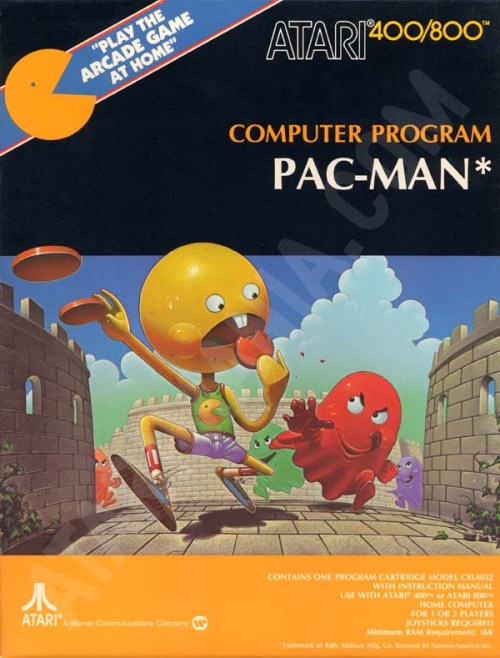 Sorry, did I say ghosts? According to the instruction manual I meant…goblins, apparently? Also there are several Pac-Men? And there’s a war? I need more of this backstory.
Sorry, did I say ghosts? According to the instruction manual I meant…goblins, apparently? Also there are several Pac-Men? And there’s a war? I need more of this backstory.
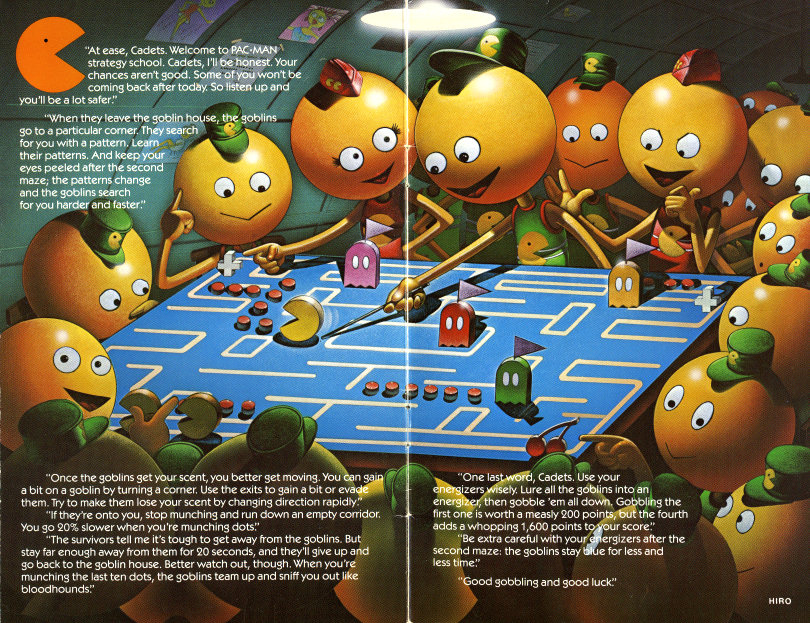 In fact, I need more Pac-Man fanfic altogether.
In fact, I need more Pac-Man fanfic altogether.
Good gobbling, and good luck.
-ds

